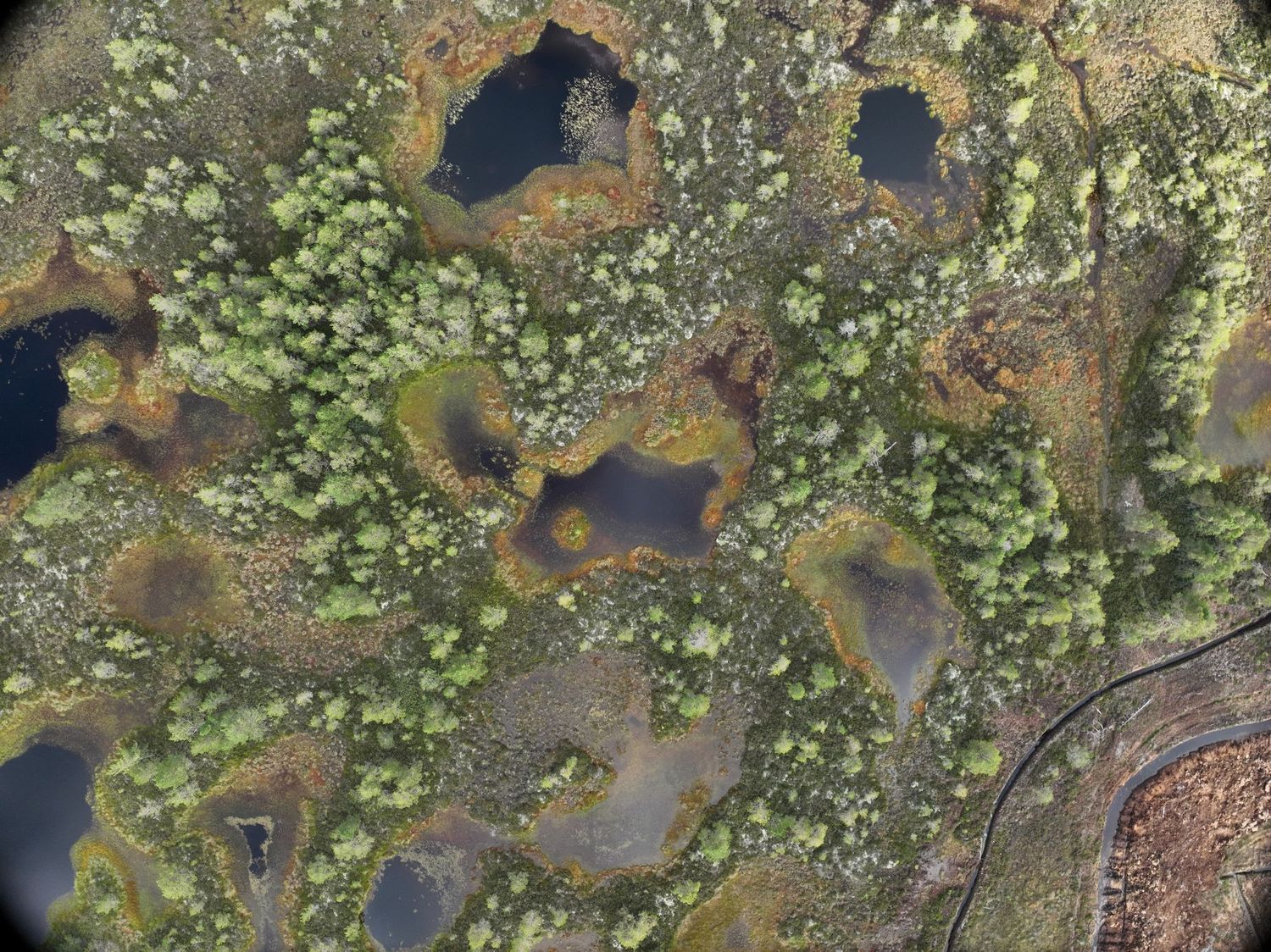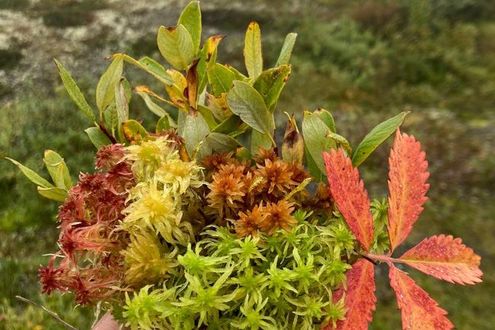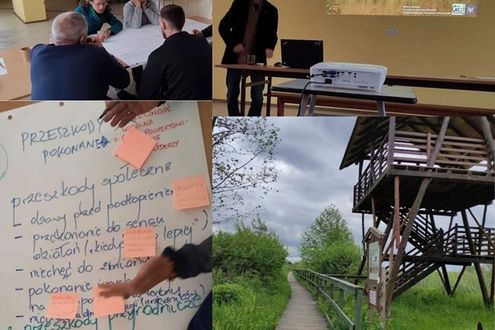Context
Work Package 1 in the WaterLANDS project relates to restoring wetland services. WP1 works to identify the best ways to manage environmental pressures that affect wetlands with the aim to reverse wetland degradation and recover important ecosystem services such as water quality and flood prevention. The team leading WP1 from Wageningen University have departed on three weeks of field work that will span three European countries. The aim of the field work is to collect drone images and take field measurements of peatlands that will help to upscale ground-based indicators to satellite images. Read the fourth and final blog of their trip below.
Finnish Encounters
Having crossed the breathtaking archipelago between Sweden and Finland, we find a warm haven at Elina Vainio’s home. An old friend from Turku University and the Subarctic Kevo Research Station where we have worked together, Elina knows the nature reserves of the region very well and points us towards the pike-perch snout stone (Kuhankuono) in Kurjenrahka national park. This stone has been a place of cultural significance for more than 600 years, illustrating the role of wetlands as natural borders throughout history. Even today this powerful landmark continues to act as a border stone for seven municipalities.
The vast Finnish peatlands are beautiful and challenging. The 90 hectares we can fly without recharging Petra’s batteries, can only cover a section of the expansive peatlands. We focus on capturing conspicuous spatial patterns and contrasting land-uses. Many peatlands have been historically drained for forestry, turning from open, wet savanna-like plains, into drier shrub-dominated pine woodlands. Even non-ditched peatlands show the impacts of the last extremely dry summers. An observation echoed by Eeva-Stiina Tuittila, peatland expert from Joensuu University and partner in WaterLANDS, whom we meet at forestry research field station Hyytiälä.
The long days on the road and field are gradually taking their toll. We replenish our batteries at the summer home of peatland friend Harri Vasander, from University of Helsinki, who welcomes us with freshly smoked fish under the Finnish flag! Being back in Finland feels like being back home. Finally, after 20 days on the road, we are sad to leave our mobile field station Otta behind, but we are excited about the next adventure: analysing our terabyte of drone data!
Curious about the Finnish part of our campaign? Keep scrolling for more pictures!
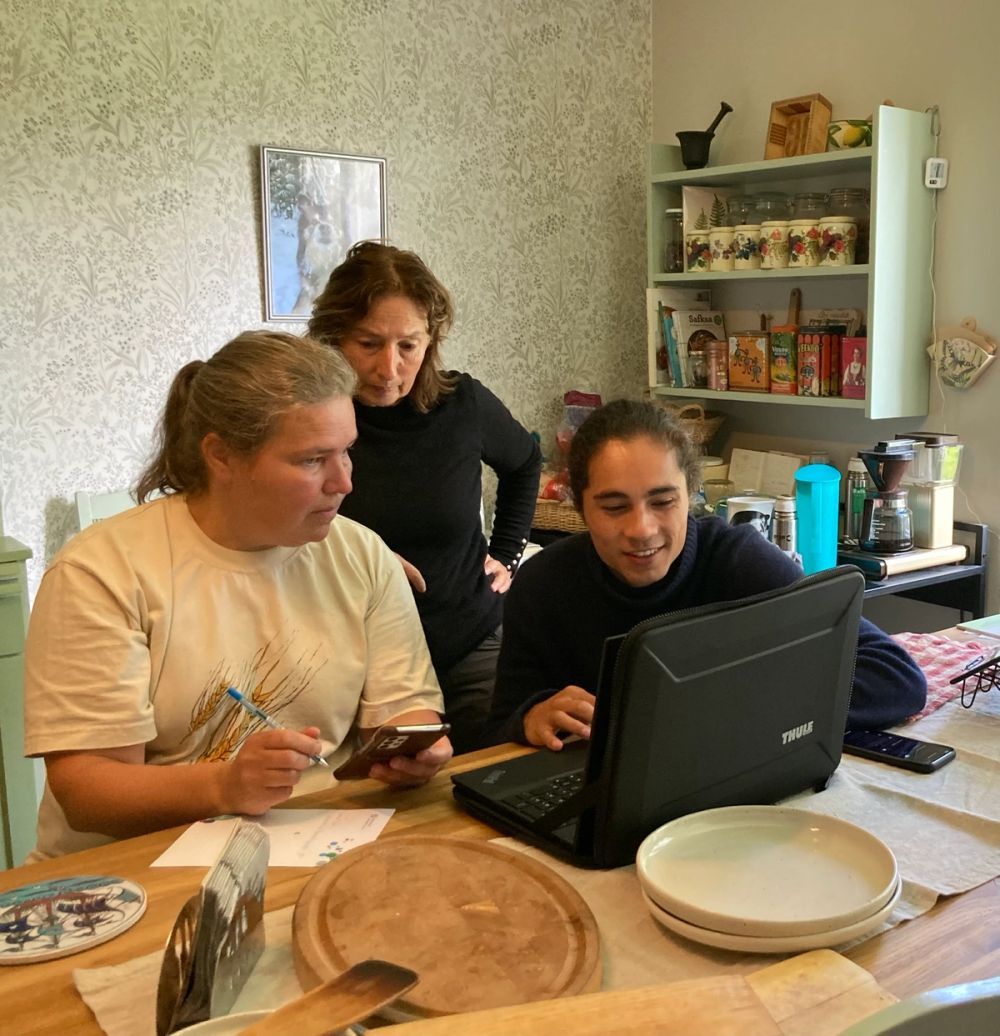
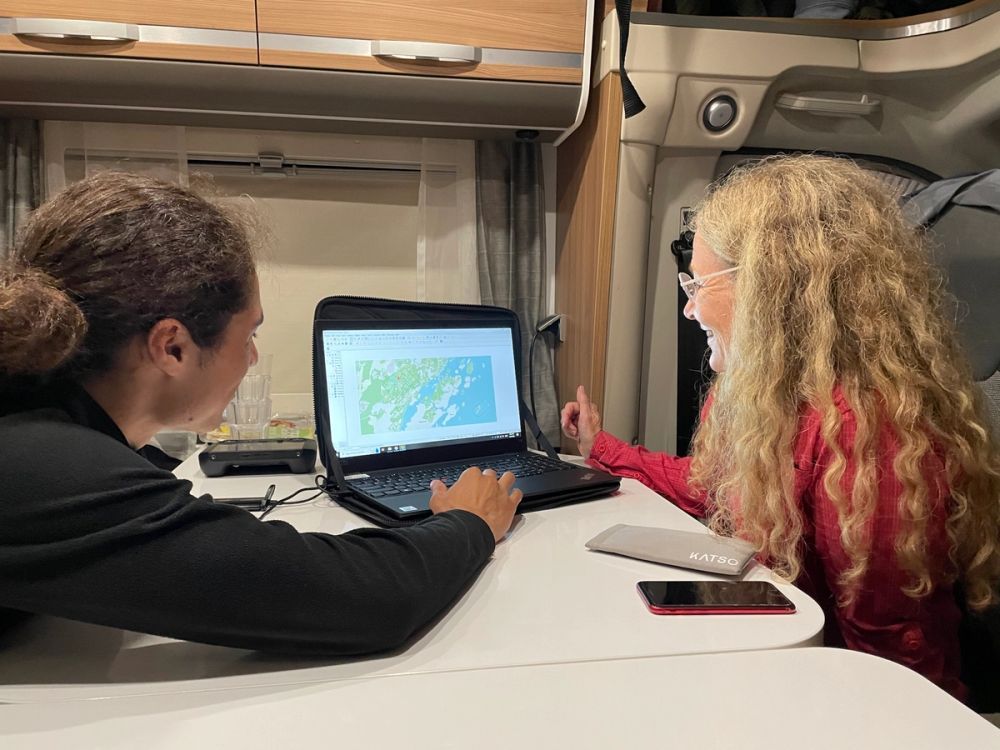
Photos 1 and 2: Discussing peatland site selection and Finnish travel with Elina Vainio (left) and Eeva-Stiina Tuittila.
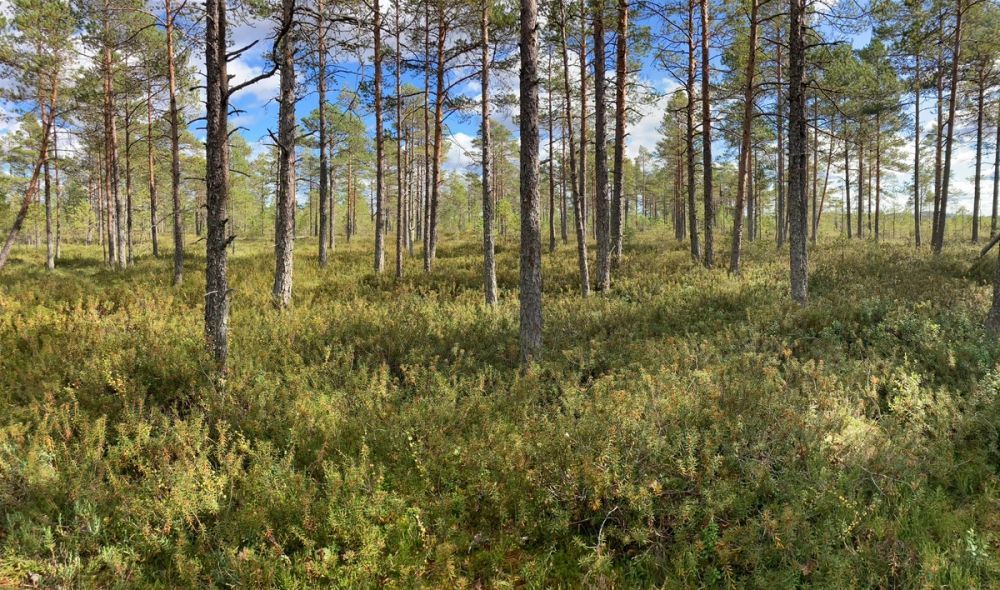
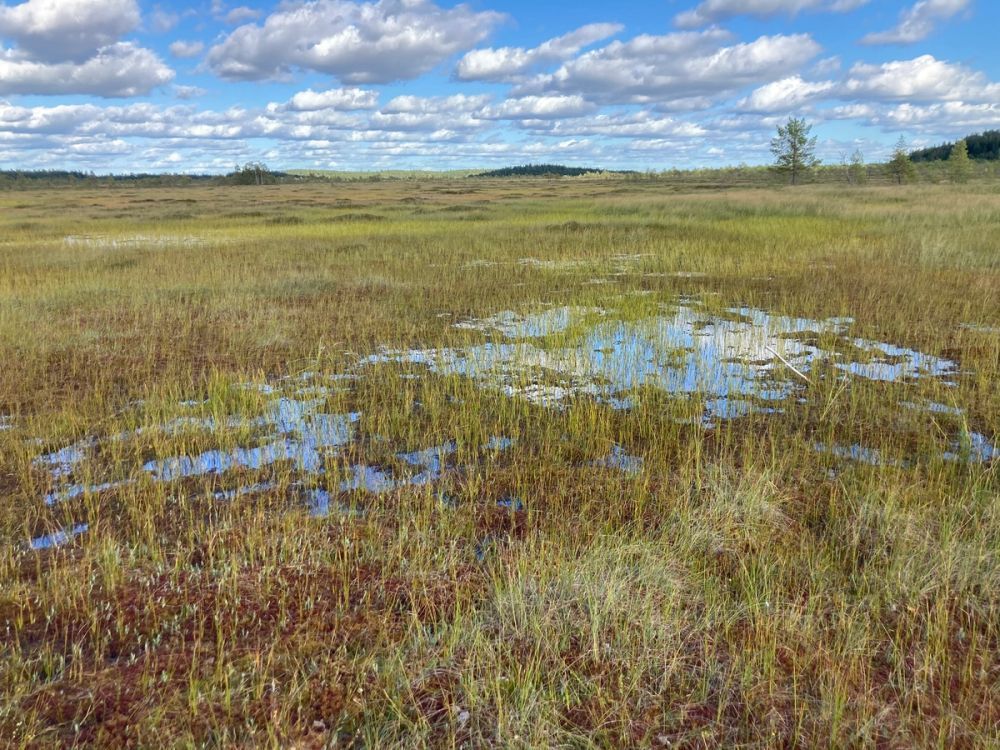
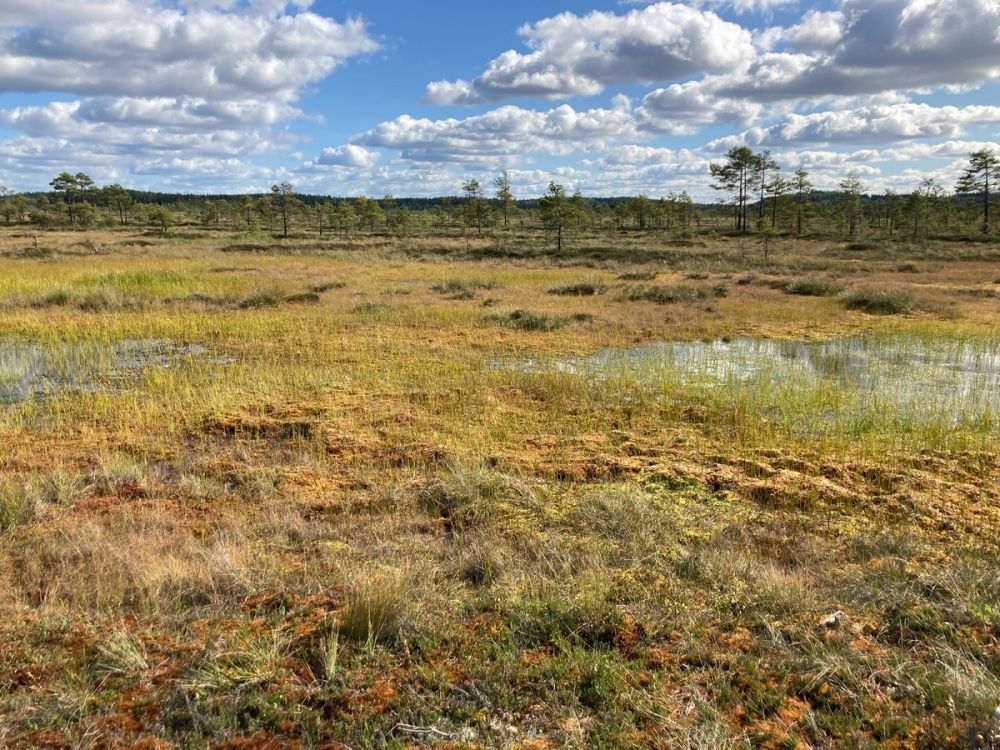
Photos 3-5: Gradient in surface wetness and woodiness in Torronsuo national park.
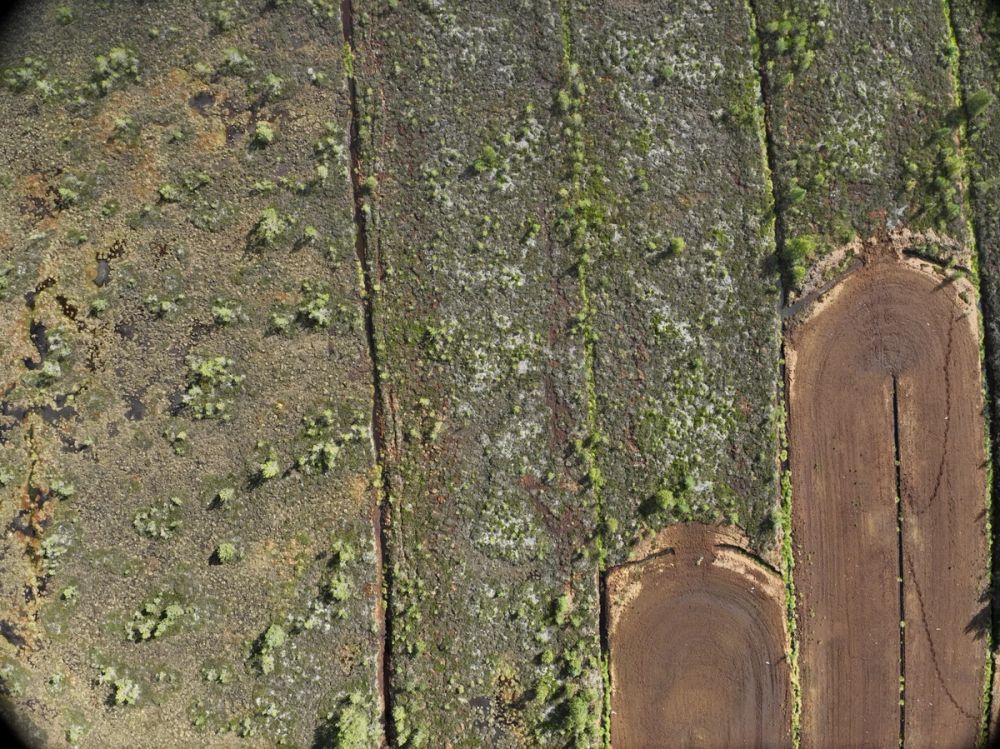
Photo 6: Peatlands drained for harvesting of potting compost. Upper right shows drainage ditches in unharvested peatland, while recent harvest is visible near bottom right. The dark brown colours correspond with shrub Calluna vulgaris, while the grey colours indicate Reindeer lichens (Cladonia sp.). Both species indicate drier surface conditions.
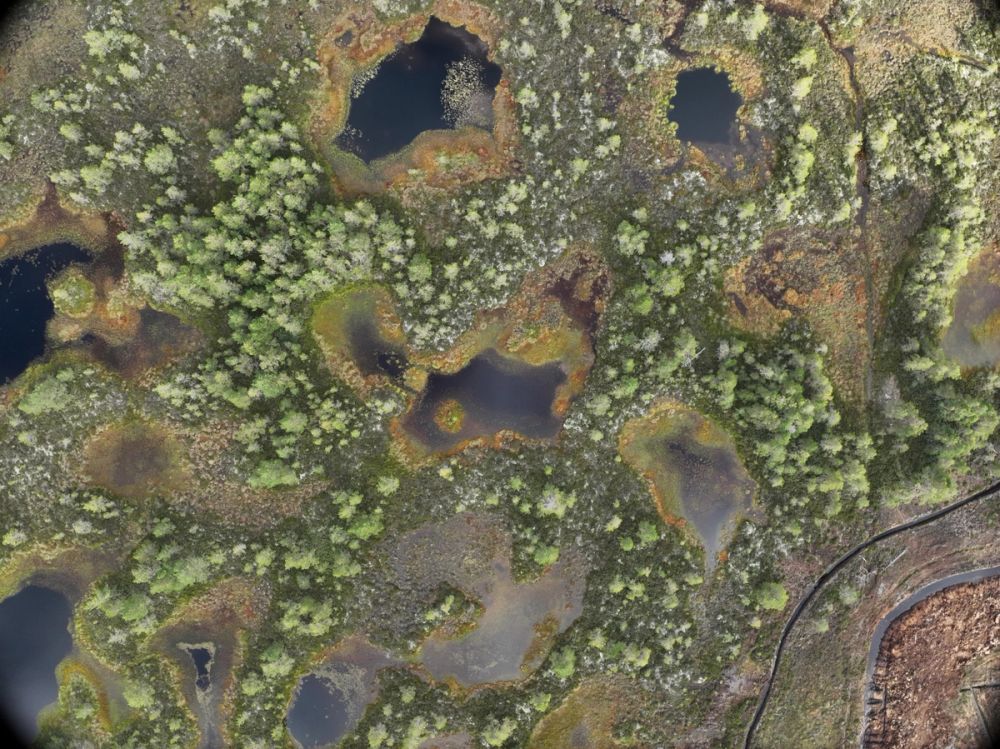
Photo 7: Charismatic patterns of peatland pools with varying cover of lighter green edges of floating peat-moss and herbaceous vegetation (lawns). In between are drier, shrub and tree dominated elevated patches (hummocks). The pattern suggests accelerated aquatic succession.
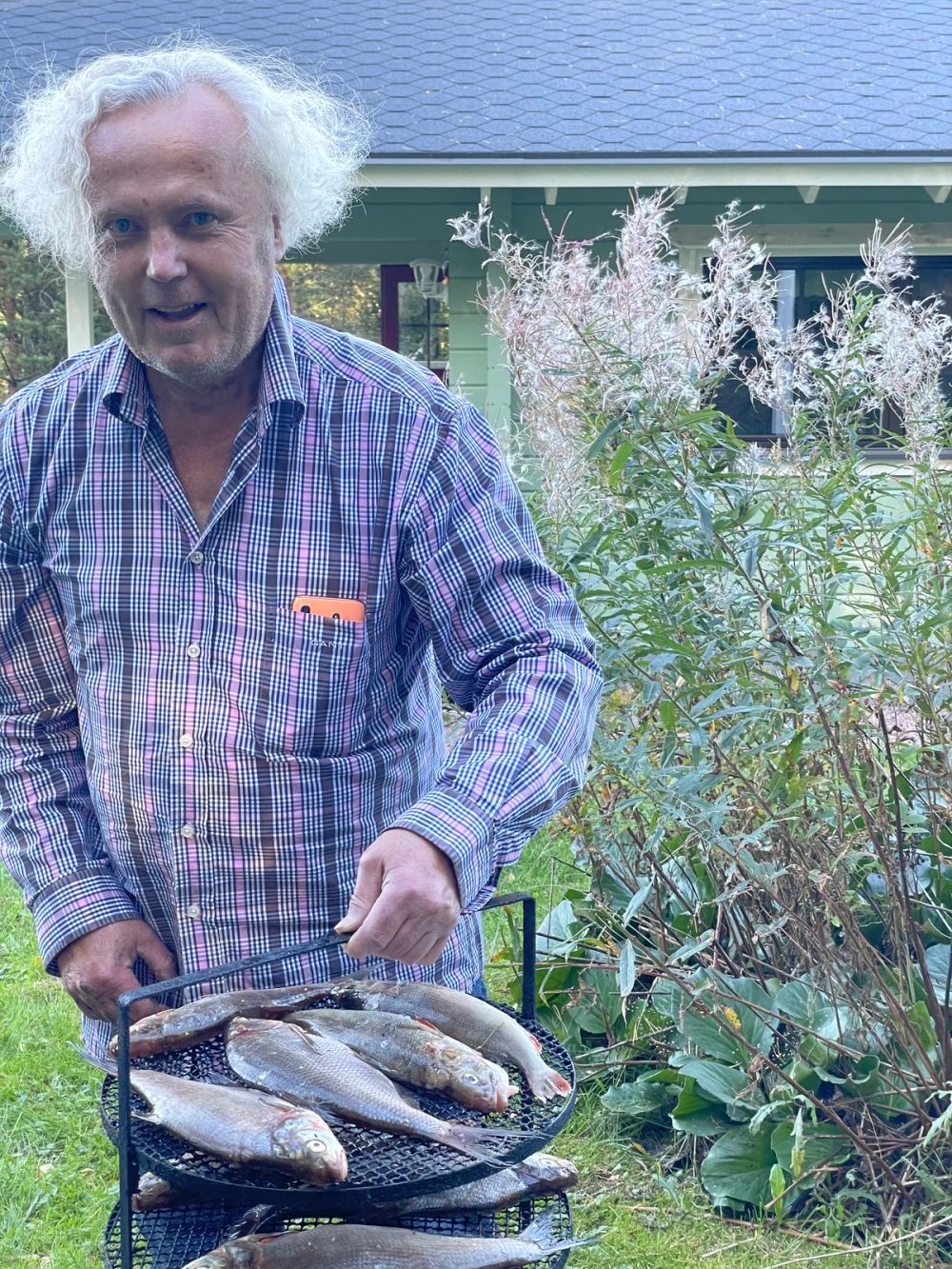
Photo 8: A warm welcome with smoked fish by Harri Vasander
